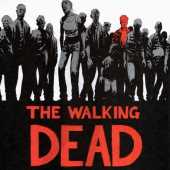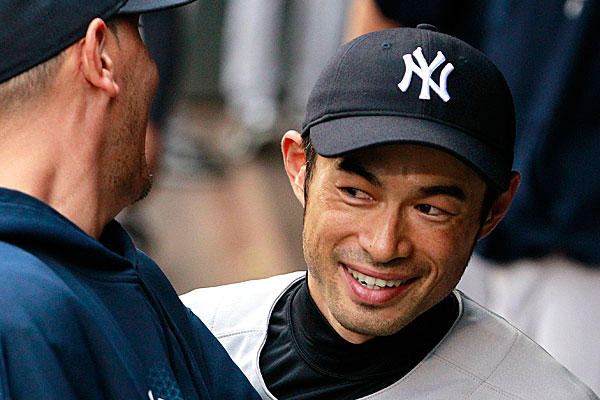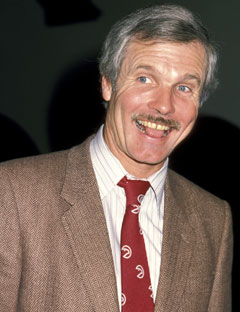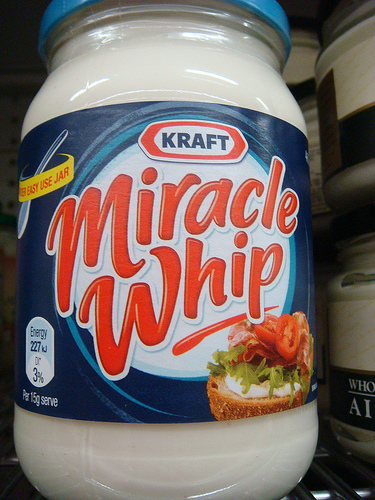The Doorbell Rang by Rex Stout
What on earth would compel Rex Stout’s legendary sleuth Nero Wolfe to confer with his assistant Archie Goodwin while the radio in the office is going full blast? Why is Archie sleeping there instead of up in his room? And why did Wolfe smuggle into his home via boxes supposedly containing plants his usual trio of operatives (Saul panzer, Fred Durkin, and Orrie Cather) as well as two actors named Jarvis and Hewitt? It is well-known that the portly gourmet and orchid-loving Wolfe is an eccentric sleuth, but even this is pushing things. Unless, that is, your home is under surveillance by the FBI.
It began when Rachel Bruner, widow of the wealthy Lloyd Bruner, came to Wolfe with a request: get the FBI off her back. They have put tails on her car wherever she goes, employees at the Bruner Corporation have been questioned, and she suspects her phones have been tapped. All in response to her sending out hundreds of copies of a book entitled The FBI Nobody Knows to everybody from members of the Supreme Court to network executives and broadcasters and many more people in high places.
Bruner offers Wolfe a $100,000 retainer plus not only expenses but whatever fee he cares to name when he’s done. After some initial reluctance, Wolfe finally agrees to take the case after Archie verifies that the FBI is indeed following her.
In their search for a way to compel the G-men to back off Bruner, Inspector Cramer of the New York Police department -the head of Homicide South who frequently is an antagonist of Nero and Archie- uncharacteristically turns ally when he first warns Archie of an attempt by the FBI to have his and Wolfe’s licenses revoked as well as something else: FBI agents may have murdered a writer named Morris Althaus who had been working on a unflattering article about the Bureau whose manuscript pages were found missing when police searched Althaus’ apartment after his death.
Wolfe encourages the FBI to assume he thinks they killed the journalist so he can set an elaborate trap for them. Archie meanwhile discovers Althaus also had connections to Bruner, the most compelling of which was via Bruner’s secretary, the lovely Sarah Dacos, so was it the G-men, Bruner, or Dacos that done him in?
The answer to this question (and others) lies within the pages of The Doorbell Rang. A Nero Wolfe mystery whose denouement, as always, is a corker.
The Tenth: Ji-Man Choi?
.
=== Up To Speed, Dept. ===
Lonnie of MC gives the following Executive Summary:
....................
Some of you may have heard of Ji-Man Choi, and some of you may not have. No matter, I planned on rehashing his story for you all anyway...
Back in the summer of 2009 a group of Seattle scouts attended a pitching demonstration in South Korea by a High School pitcher with the name of Seon Gi Kim. Catching him that day was converted third baseman Ji-Man Choi. The Mariner scouts liked what they saw from young Seon Gi Kim and signed him to his first professional contract. The kid behind the plate also impressed the scouts and he too was signed with little or no fanfare.
Both young men started their professional careers in the Arizona Summer League at Peoria. Seon Gi Kim ran a high ERA, but impressed a lot of folks with his periphials.
Meanwhile, Ji-Man Choi was doing something that no one expected; he was killing the ball. While in Arizona as an 18 year old Choi ran a .378/.459/.541/1.000 slashline. He showed a phenominal batting eye with his 27/39 BB/K rate.
Since he was so new to catching the M's brass decided to move him into the position slowly, so he spent that first year in Arizona playing 1b for 29 games, and catcher for 10. The combination of his defense and his offense got more than a few of us excited about the possibility of actually having a catcher who is a complete package.
Late in the 2010 season Choi was given a surprise promotion all the way up to A+ High Desert where he played 1B and DH. In 50 plate appearances he went from an interesting and exciting player to a bona fida prospect. While with High Desert Choi put together a slashline of .302/.380/.442/.882. Not many 18 year old kids can make the transition from the Arizona Rookie leagues to the uber competative A+ Cal League with such aplomb.
Based upon his performance in 2010 a lot of us were really excited to see where Choi would end up in 2011 and if he would be a full-time catcher or not. Gordon (G_Moneyball) and I saw Choi in ST in March of 2011 and were gidddy to see him walking around in catcher's gear. He looked about as good as any kid could look in the early stages of ST and when we both left we felt that for sure that Choi would break camp with either Clinton or Everett, but it didn't work out that way...
Sometime during the later stages of ST in 2011 Choi started to experience pain in his back. I don't have all of the particulars, but such was the pain that Choi did not play a single game in 2011, and in December a broken bone in his back was discovered (again, no details). Choi had two screws and a metal rod placed in his back and was shelved for several months beginning in 2012. Finally, sometime in March/April he had the screws and rod removed and was allowed to start practicing and begain playing baseball in earnest when he was assigned to Clinton.
Choi made his 2012 debut playing DH on May 19 and went 2/4 with a double and a ribbie and hasn't slowed down much from there. So far in 2012 Choi has played 30 games at 1B, and 27 as the DH. Through the 57 games that he has played in, Choi has put together a slashline of .306/.421/.497/.927 in a predominantly pitcher friendly league. Choi has a batting eye of .653 (.500 is the baseline for a good prospect. Anything north of their is gravy.) with 32 walks and 49 K's. He has a walk rate of 12.3%, which is bloody awesome, and a strikeout rate of 18.85% which is just as awesome.
The issue at the moment with Choi is will hit for enough power to be a legitimate 1st baseman. So far this year he has hit 12 doubles, 1 triple, and 8 homeruns. His isolated power(slugging - average) is .191. If he is able to keep this sort of production up then, yes, he can be viewed as a legitimate 1B.
It's too bad that Choi will most likely never play catcher again. As a catcher, his potential was off the charts.
Lonnie
................
That'll do for us too.
Actually, enough is never enough for SSI, so here came an SSI February 2011 two-parter on Choi. The bumper sticker extract: Choi's talent was special, but he was labeled. Not enough power for 1B, not enough glove for other positions.
His first year in pro ball, 2010, he was out of scale, with a .459 OBP in 39 games. There comes a point where you're not learning anything as a kibitzer. What would John Jaso's OBP be in rookie ball next year? .400, .500, .600? Probably about .459.
Then in 2011 he had the back surgery. Leaving us where in 2012? He was an ex-catcher, like John Cleese's ex-parrot. Choi, with a year's worth of rust, went to the pitchers' Midwest League in A ball and hit .300/.420/.460.
A .420 OBP is also pretty much out of scale. Choi had about 7 walks and 8 strikeouts every ten games; when you're going that deep in counts in the low minors, there are a lot of different things that could be going on.
.
=== Didn't Know They Allowed TV There ... Oh, It Was SOUTH Korea, Dept. ===
Choi had 8 homers and 14 doubles in 66 games, which translates to about 20 homers and 35 doubles over a 162-game season. We checked out the swing.
Choi's mechanics are HILARIOUSLY similar to Ichiro's. There isn't a way in the world that Choi did NOT consciously and painstakingly pattern his swing after that of #51. See G-Money's remarks here about the mindsets of ballplayers from that area of the world.
Two differences between Choi's swing and Ichiro's: (1) Choi's is considerably longer. Check the bat wrap at the 0:49 mark in this video. (2) Rather than being 5'7" and 150 lbs or so, Ji-Man Choi stands over 6 feet and weighs about 200 lbs.
So what do you get, if you take Ichiro's swing and give it 200 pounds? You get a Dr. D who has a rather different opinion than that of folks who project Ji-Man Choi to be a singles hitter.
.................
Wade Boggs -- a high-BB guy like Choi -- also had a low CG and good hip torque, but Boggsie used a Pete Rose pepper swing, short to the ball, short followthrough, mediocre acceleration. Ichiro's swing is not a pepper swing.
Chris Snelling - a high-BB guy also -- had a longer swing and a KBIZLT (keep the bat in the zone a long time) swing like Boggs, Seager, and Choi. (Note the relatively flat followthrough on Choi's swing and the way his hands stay inside the ball). But Snelling's lower half wasn't particularly engaged with his swing.
Ji-Man Choi has an exceptionally dynamic swing, with the lower body synch'ing like a PGA pro's does, or like ummmmm Ichiro's does.
................
Dunno what Choi is going to turn out to be, a Boggs-ian 3B, an Olerud-type 1B, a Chris Snelling who panned out, a Shin-Soo Choo or a guy who spends a lot of his life sitting in a very soft chair. But I'd like to be his agent.
.
Prodigies, Part II
So maybe violin concertos aren't your prodigy cup-o'-tea ... so we'll serve up this Motown classic performed and co-written by 15-year-old Stevie Wonder. No 15-year-olds make the minors, but Julio Morban was in the rookie leagues at age 17, and that's close enough.
***
In the last article, we cast a very narrow net: guys who had a "Golden Year" while still holding "Prodigy" status (playing at a level or more above their age-arc). Only a very few make it, and they are All-Stars and guys who get MVP votes (and Eric Hosmer and Jesus Montero).
Here, we are casting a wider net, looking at guys who get the "Distant Early Warning" Alert for producing at a level above their age-arc and the "Person of Interest" Alert for demonstrating major-league hitting skills that fit one of the three profiles, but are short of the "all-around" status demonstrated in a "Golden Year."
In short, "Prodigy" status is the second-best column on THE GRID. If having a "Golden Year" is the best indicator of potential MLB success, then "Prodigy" status is next-best.
So ... who makes it into this column?
|
. |
Age | Level | G | PA | AB | H | 2b | 3b | HR | BB | K | BA | OBP | SLG | OPS | HR/PA | BB/PA | PP | AP | K/PA | PI | "+/-" | |
|
. |
G. Guerrero 2012 | 18 | FRk,Rk | 68 | 305 | 275 | 96 | 14 | 4 | 15 | 24 | 41 | 0.349 | 0.393 | 0.593 | 0.986 | 0.049 | 0.079 | 0.187 | 0.364 | 0.134 | 0.244 | 3.089 |
|
. |
Morban* 2012 | 20 | A+,Rk | 82 | 352 | 321 | 99 | 16 | 2 | 17 | 21 | 70 | 0.308 | 0.352 | 0.530 | 0.882 | 0.048 | 0.060 | 0.159 | 0.330 | 0.199 | 0.311 | -0.394 |
|
. |
DeCarlo 2012 | 18 | Rk | 53 | 223 | 182 | 43 | 12 | 3 | 4 | 31 | 47 | 0.236 | 0.368 | 0.401 | 0.769 | 0.018 | 0.139 | 0.224 | 0.269 | 0.211 | 0.343 | 3.073 |
|
. |
Liddi 2011 | 22 | AAA | 138 | 637 | 559 | 145 | 32 | 3 | 30 | 61 | 170 | 0.259 | 0.332 | 0.488 | 0.821 | 0.047 | 0.096 | 0.198 | 0.345 | 0.267 | 0.319 | 0.146 |
|
. |
Choi* 2010 | 19 | Rk,A+ | 50 | 209 | 178 | 64 | 16 | 3 | 2 | 27 | 39 | 0.360 | 0.440 | 0.517 | 0.957 | 0.010 | 0.129 | 0.230 | 0.275 | 0.187 | 0.314 | 3.035 |
|
. |
Franklin# 2010 | 19 | A,AA | 130 | 578 | 516 | 146 | 22 | 7 | 23 | 51 | 124 | 0.283 | 0.354 | 0.486 | 0.841 | 0.040 | 0.088 | 0.178 | 0.304 | 0.215 | 0.327 | 0.538 |
|
. |
Montero 2009 | 19 | A+-AA | 92 | 379 | 347 | 117 | 25 | 1 | 17 | 28 | 47 | 0.337 | 0.389 | 0.562 | 0.951 | 0.045 | 0.074 | 0.187 | 0.349 | 0.124 | 0.249 | 2.968 |
|
. |
Liddi 2009 | 20 | A+ | 129 | 565 | 493 | 170 | 44 | 5 | 23 | 53 | 122 | 0.345 | 0.411 | 0.594 | 1.005 | 0.041 | 0.094 | 0.221 | 0.396 | 0.216 | 0.241 | 1.776 |
|
. |
A. Jones 2006 | 20 | AAA | 96 | 416 | 380 | 109 | 19 | 4 | 16 | 28 | 78 | 0.287 | 0.345 | 0.484 | 0.829 | 0.038 | 0.067 | 0.161 | 0.300 | 0.188 | 0.324 | -0.119 |
|
. |
Balentien 2006 | 21 | AA | 121 | 522 | 444 | 102 | 23 | 1 | 22 | 70 | 140 | 0.230 | 0.337 | 0.435 | 0.772 | 0.042 | 0.134 | 0.222 | 0.309 | 0.268 | 0.334 | 2.259 |
|
. |
Lopez 2005 | 21 | AAA | 44 | 194 | 182 | 58 | 19 | 0 | 5 | 8 | 25 | 0.319 | 0.354 | 0.505 | 0.860 | 0.026 | 0.041 | 0.165 | 0.319 | 0.129 | 0.287 | -0.162 |
|
. |
Choo* 2005 | 22 | AAA | 115 | 502 | 429 | 121 | 21 | 5 | 11 | 69 | 97 | 0.282 | 0.382 | 0.431 | 0.813 | 0.022 | 0.137 | 0.211 | 0.235 | 0.193 | 0.348 | 3.412 |
|
. |
Lopez 2004 | 20 | AAA,Rk | 78 | 318 | 287 | 83 | 20 | 0 | 13 | 18 | 31 | 0.289 | 0.339 | 0.495 | 0.833 | 0.041 | 0.057 | 0.160 | 0.321 | 0.097 | 0.277 | 2.124 |
|
. |
Balentien 2003 | 18 | Rk | 50 | 216 | 187 | 53 | 12 | 5 | 16 | 22 | 55 | 0.283 | 0.363 | 0.658 | 1.021 | 0.074 | 0.102 | 0.255 | 0.551 | 0.255 | 0.086 | 3.374 |
|
. |
Choo* 2002 | 19 | A,A+ | 130 | 558 | 459 | 139 | 29 | 9 | 7 | 79 | 107 | 0.303 | 0.421 | 0.451 | 0.872 | 0.013 | 0.142 | 0.222 | 0.246 | 0.192 | 0.346 | 3.453 |
|
. |
Josh Ellison 2002 | 18 | Rk | 39 | 177 | 149 | 49 | 8 | 3 | 0 | 23 | 21 | 0.329 | 0.424 | 0.423 | 0.847 | 0.000 | 0.130 | 0.192 | 0.168 | 0.119 | 0.367 | 3.771 |
|
. |
Choo* 2001 | 18 | Rk,A | 54 | 260 | 212 | 66 | 10 | 10 | 4 | 35 | 52 | 0.311 | 0.427 | 0.509 | 0.936 | 0.015 | 0.135 | 0.227 | 0.311 | 0.200 | 0.302 | 3.117 |
Two of the guys on the chart went on to have "Golden Years" (Montero and Balentien), so they have already been dealt with in that article.
That leaves 10 guys that the Spectometer spits out as "Prodigies" since 2001. Five of them have yet to get an MLB shot, and one is still a prospect (Liddi). The other four are an interesting set:
- Adam Jones is a minor star whose career OPS+ of 106 masks the progress of 108, 111, and 125 in his last three (ages 24-26) sesaons.
- Shin-Soo Choo is also a minor star, who maybe should be more than that if not for some injuries and playing in Cleveland. His career OPS+ is 132.
- Jose Lopez bordered on being a minor star for awhile, but never progressed after a 104 OPS+ season at age 24. To me, the tipoff was "Production Perecentage" (XBH + BB / PA) well under the optimal 19%. Why? Because, despite the low K%, he didn't ever draw enough walks ... or hit enough home runs to make up for the low walks. Once MLB pitchers figured that out, he couldn't defend himself and his production cratered. Just my view. Another guy with a similar profile: Leon Landry.
- Josh Ellison had a sizzling streak at age 18 that netted him a .424 OBP and a spot on this chart. He had a decent, but not eye-catching, season two years later, and then was gone.
All told, I think the track record bodes pretty well for the six remaining prospects.
- Liddi showing up twice is a good sign, but, like Adam Jones, his low rating for Plate Skills indicates it might take awhile for the talent to show up at the MLB level -- and he doesn't bring premium defense. But the hitting talent is there.
- Franklin would have shown up a second time if his AAA and RH stats didn't drag him down. [To be clear, Franklin still shows up as a "DEW" Alert at age 21 in AAA, just not the "double good" POI+ DEW like his 2010 season did.]
- Of course, if you've been following the blog, you know we love "our man Ji-Man" [Choi] the Korean Olerud. The Plate Skills are there, but the key issue is whether he'll have enough pop to make it as a 1b/DH. I assume the catcher experiment is dead.
- And we practically invented the Morbanwagon for Julio. Oh, yeah, we did invent the Morbanwagon. Even with his development slowed by injuries, he's making great strides.
Then two brand new dudes:
- Gaby, Nephew of Vlad [Guerrero] is kind of cheat-y because a lot of his stats are from the Dominican, and I usually don't count those. But he had enough U.S. stats that I thought I'd count his whole season. And his whole season ... wow.
- DeCarlo appeared to be struggling in his "regular" stats (.236 BA), but the Spectometer draws out the good stuff: 22.4% Production Percentage (over 19% is good), and +3.1 Hitter's +/- (over +1.5 is good). The 31 walks in 53 games is key. Like Choi, he's looking kinda Olerud-y, except as a third baseman, and right-handed. So that doens't make him all that Olerud-y does it? I guess that makes him more Youkilis-y.
Heat Shields
.
At Bill James Online today, ten years on, Bill released a behind-the-scenes blow by blow that reveals what happened at the Boston Bullpen By Committee debacle in 2003.
As many of you know, James was hired by the Red Sox in October 2002, after having been baseball's wisest man for 20 years past. One of the first things the Red Sox did was try to exploit James' insights on relievers' Leverage Index: it's theoretically more efficient to use your Closer in a tie game, 8th inning, than it is to use him when ahead 5-2 in the 9th inning.
The Boston press misconstrued this as a Closer By Committee strategy, screamed loud and long before the season began, and then .... the Boston relievers mangled SIX games on their first road trip. For a few brief shining moments, it looked like Baseball(TM) was going to be able to beat back the sabermetric tide, get James powerflushed, and retreat to the days of Babe Ruth on the team bus yakking with the faithful beat writers.
To make a long story short, Bill James gracefully absorbed the press' screaming. He refused to run around saying, "Hey, it's not ME who said any of that. It's the OTHER guys who are failing in this front office." He played rubber popup punching clown in his first few months as a Sox VP, acted as a "heat shield" for the rest of the Boston front office, and apparently endeared himself to other Boston suits for doing so.
All's well that ends well: Boston in fact had a 13-5 record after eighteen games that season, and went on to some of its best seasons in the ten years since.
James remarks, en passant, that the 2012 Red Sox collapsed in part because Bobby Valentine was not a heat shield for his players, the way that Terry Francona used to be. Bobby V could be considered rather unlike a heat shield, in the sense that an American election season could be considered rather unlike a romantic dinner at Ruth's Chris steak house.
Eric Wedge performs this function rather well for the Mariners, by the way; when Jesus Montero's pitcher gave up a lot of runs, he didn't throw Montero under the bus, even though Eric Wedge had to be wincing with every Montero pitch call. You're probably sitting there thinking right now that Jesus Montero did a surprisingly good job as a catcher, despite the fact that as they occurred, Wedge enjoyed exactly zero of Jesus Montero's starts.
That's being a heat shield, when YOU don't agree with an org decision as a manager, and yet nobody knows that you don't agree, and in fact you're perceived as on board with the process, and in fact you're even pitching the print media on the young man's future as a catcher.
There was a time just fairly recently when we in the blog-o-sphere, especially me as Dr. D / jemanji / Gene Wilder / That Annoying Guy, thought hey. Bobby Valentine could be just what the Seattle Mariners need following Don Wakamatsu - somebody to play a kind of Billyball here, to stick their chests out, to take on the other guys. But the relationships between managers, executives, and worker bees can be complex when the stakes are so high. Even the Boston Red Sox didn't see this kind of land mine coming.
Zduriencik and Wedge are amassing a lot of young talent, and they have that young talent popping tall and marching in step. There is a certain brand of sabertista that DETESTS the subject of "intangibles," but the Red Sox did not lose 93 games this year due to tangibles. Just because you don't understand something doesn't mean that you get to declare it irrelevant. And isn't that where sabes came in when arguing with oldtimers about W/L and ERA?
I'm not Eric Wedge's biggest fan by any means, but I am a fan of being objective about a person's strengths and weaknesses. There are a whale of a lot of things that Eric Wedge does verrrrrrrry skillfully, and many of those things are beyond the perception of bloggers.
.
Eccentric billionaires
The billionaire that sticks out in most people's minds is Howard Hughes whose life is portrayed in the 2004 film The Aviator. The first time I heard of this eccentric billionaire was through the James Bond classic Diamonds are Forever. There are a lot more like him right now.
Mark Zuckerberg
He shows up to the Facebook IPO road show in a hoodie and although we are used to these types of quirks from tech geniuses, Zuck is one of a kind. His new challenge of 'eating only the meat he kills' ranks up there.
Clive Palmer
I think I like Clive Palmer. The Australian mining magnate has a dream of cloning dinosaurs to create a Jurassic Park in real life. Palmer seems to love dinosaurs so much he even purchased a T-Rex.
Richard Branson
Branson epitomizes the eccentric billionaire. His crazy stunts to break world records in hot air balloons and yachts have made him memorable. Being a space enthusiast, his contributions to space travel are truly amazing.
Paul Allen
This list already has Richard Branson and Mark Zuckerberg, but my favorite billionaire is the nerdy Paul Allen. Allen is worth $15 billion and he owns the Seattle Seahawks and the Portland Trailblazers. So not only is he a balla, but he also shares my love for space and science-fiction. Allen famously donated $25 million to the space program in the search for extra-terrestrial life.
Peter Thiel
You've got to dream big and that's how you can hope to become like PayPal founder Peter Thiel. Even if you don't, you should champion his causes to end aging and develop floating cities.
Ted Turner
Ted Turner is a businessman with a great heart. His creations include 'Captain Planet' and the belief in a one world system that is almost John Lennon like.
Prince Jefri of Brunei
The 'playboy' prince is known as much for his staggering wealth as his extravagant spending. He has reportedly spent $15 billion. He has had a wild, wild life with even a yacht named after breasts.
James Cameron
Cameron is well-known for his hit movies like Titanic and Avatar. He is a space lover just like me with his newest venture Planetary Resources looking promising. In addition to hoping to mine asteroids, he supports the colonization of Mars.
When cleaning plants, skip the mayo, milk and conditioner!
There is an awful lot of advice available on the internet, if you hadn't noticed. Most of it bad. A lot of it sounds good, or is the kind of thing that sounds so unlikely that it MUST be right. Especially if someone asserts that their dear sainted great grandmother used to do it that way.
Dealing with dogs who need their space
Many Shetland Sheepdogs are sweet and reserved, and it’s natural that owners of dogs with this sort of temperament might think most dogs are similar. The truth is, however, that many dogs don’t care for other dogs, especially strange dogs, in the least. If these dogs have a savvy owner who works hard with them, it can be difficult to tell that the dog needs her space.
I’ve been taking obedience classes with my Sheltie, named Kayla, who is usually good with other dogs. A young miniature poodle in the class called Ajax tries to get other dogs to play with him by lunging at them. Last week, Ajax lunged at Kayla when she didn’t expect it, and she snapped at him. It was appropriate, Ajax’s owner agreed, but I’ve made a point to keep Kayla away from him to prevent any other unpleasant interactions.
Sadly, the owner, I’ll call her Mary, didn’t quite learn she needed to keep Ajax under better control, and Mary also didn’t pick up on the signs that another dog in the class does not tolerate other dogs at all. When our class was practicing the stay exercise, Mary left Ajax, who is clearly unable to do a stay for even a nanosecond, and walked away. Ajax went over to play with a non-tolerant dog, and a fight ensued.
The non-tolerant dog, Stella, had been very well-behaved in all previous classes. In retrospect, I could understand why someone might not realize that Stella was actually very reactive to other dogs. Stella’s owner did a phenomenal job handling her. The owner kept Stella away from other dogs. She constantly interacted with Stella, and kept Stella engaged with heeling or tricks during any downtime. When we did stays, the owner put up a piece of ring fencing to help block Stella from others.
Having had reactive dogs, I appreciated the hard work Stella’s owner was putting into training her, and I made a point to keep Kayla at a distance. Thankfully, after the fight, Ajax seemed OK. Mary was shaken, as was I. The one who was most devastated was Stella’s owner, who sat on the floor with Stella, in tears. Whether you have a friendly, or tolerant Shetland Sheepdog, or a reactive one, it’s always a good idea to be very careful of other dogs. Even dogs who seem well-behaved can become very upset when they space they need is invaded.
I'll tell Obama to shuck and jive if I darn well want to!
Listen. I don't want to sound racist. Because I'm not racist! The fact that I used a racist phrase in reference to a black president has nothing to do with it. I have called Obama a lot of things. This is just another one of them.
Tampa Bay mystery monkey captured
The macaque who had been roaming the streets and suburbs of Miami's Tampa Bay area, eluding capture for four years, has finally been caught. This celebrity monkey first came to national attention earlier this year, with a six page article in the New York Times.
Oiling your wooden cutting board
One feature of kitchen maintenance that I admit I'm not good at keeping up with is oiling my wooden cutting board. Most sources say you should oil it once a week. Personally, I oil mine whenever it starts to look dry and "thirsty," which works out to about every three months. Mea culpa.









